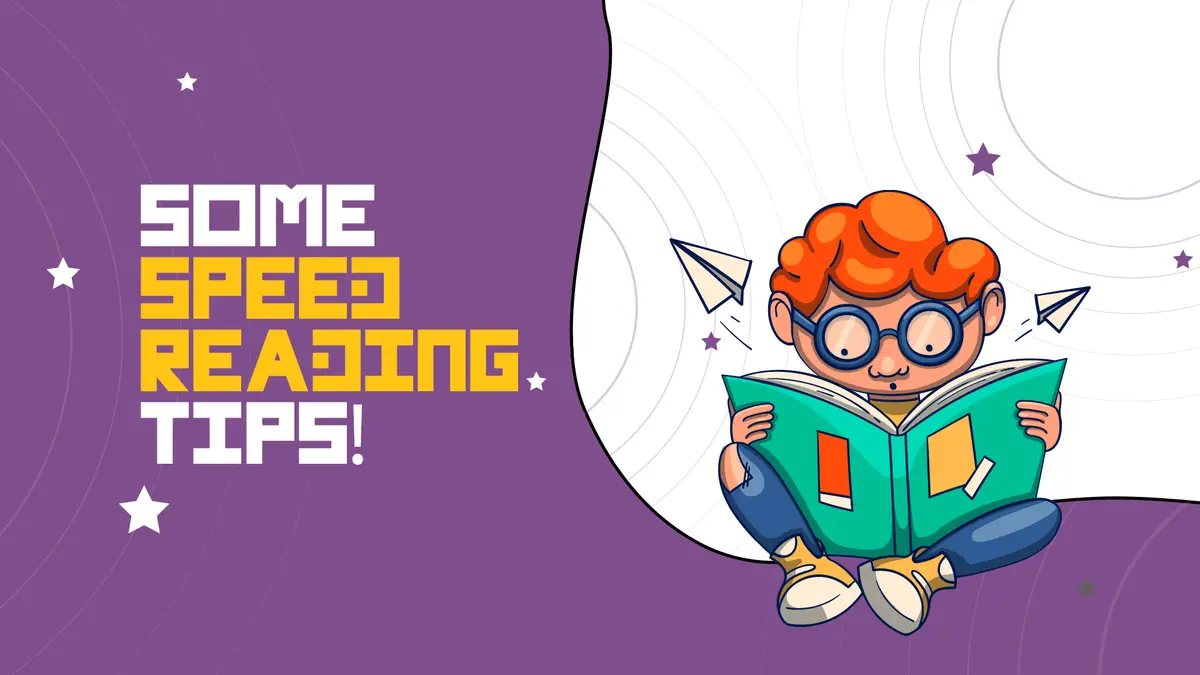How To Read Fast: Top Speed Reading Tips




Speed reading is reading at an accelerated pace with good comprehension. The average person reads at a speed of about 200-300 words per minute (WPM). Speed readers can achieve speeds of 500-1000 WPM while maintaining a high level of understanding.
| Type of Reader | Words per Minute (WPM) |
| Average Reader | 200-300 |
| Good Reader | 300-400 |
| Speed Reader | 500-1000 |
In this blog, we will explore proven techniques, expert opinions, and data-driven strategies to help you become a faster, more effective reader.
Our brains are capable of processing words much faster than we typically read. According to cognitive science, our eyes can take more than 500 words per minute. Still, habits like subvocalization (silently pronouncing words in your head) make us read slower than our potential.
Are you a student buried under piles of textbooks or an adult juggling work and personal life?
Mastering the art of speed reading can save you time and increase your productivity. But how do you read faster without losing comprehension? Let's check some practical tips and strategies that can help you boost your reading speed while still retaining the content.
Reading is a fundamental skill that we use daily.
But what if you could read more in less time? Aahaa sounds great? right?
Imagine breezing through reports, emails, or textbooks without missing a beat. Speed reading isn't about skimming or skipping words; it's about training your brain to process information more efficiently.
What is it?: Subvocalization is the habit of pronouncing words in your head as you read. While this helps with comprehension, it slows you down.
How to overcome it?: Focus on the meaning of groups of words or phrases rather than each word. Practice reading faster than you can subvocalize to eliminate this habit gradually.
Why it works?: Using a pointer like your finger or a pen helps guide your eyes and keeps them moving forward. This method prevents regression (the habit of going back to re-read words).
How to do it?: Simply glide your finger or a pen beneath the text as you read. Increase the speed gradually as you become more comfortable.
What it means?: Most people only focus on the words directly in front of their eyes, but our peripheral vision can capture words on the sides of the page.
How to practice?: Train your eyes to take in more words at a glance by focusing on the center of the line and trying to capture words on either side.
Why it helps?: Instead of reading word by word, try reading in chunks or groups of words. This allows you to take in more information at once and speeds up the reading process.
Exercise: Start by grouping two words, then three, and gradually increase the size of the chunks as your proficiency improves.
The concept: Every time your eyes move, they spend time refocusing. Reducing these movements can increase your reading speed.
Technique: Try to minimize the number of eye movements per line by using your pointer to guide your eyes smoothly across the page.
Technology at your service: Apps like Spreeder and Acceleread can help train your brain to read faster by flashing words or phrases quickly on the screen.
Benefit: These tools can help break bad reading habits and train your brain to process information more rapidly.
If you want to discover more ways to improve your reading speed, check out the Blog - 10 proven strategies to improve your reading skill
According to Dr. Raymond P. Garza, a cognitive psychologist,
" Speed reading is not just about reading quickly; it's about training your brain to understand information faster. The key is consistent practice and gradually increasing the speed."
According to Joseph Addison, an English essayist,
" Reading is to the mind what exercise is to the body. "
Initially, you might notice a slight dip in comprehension as you adjust to the new speed, but with practice, your understanding will improve.
It varies by individual, but with consistent practice, you can see improvements within a few weeks.
If done incorrectly, speed reading can lead to eye strain or headaches. Ensure you're using proper techniques and take breaks.
Yes, anyone can learn to speed read with the right techniques and practice.
No, speed reading is best used when you need to process a large amount of information quickly. For deep understanding, slower reading might be preferable.
Absolutely! These techniques work well with both physical and digital content.